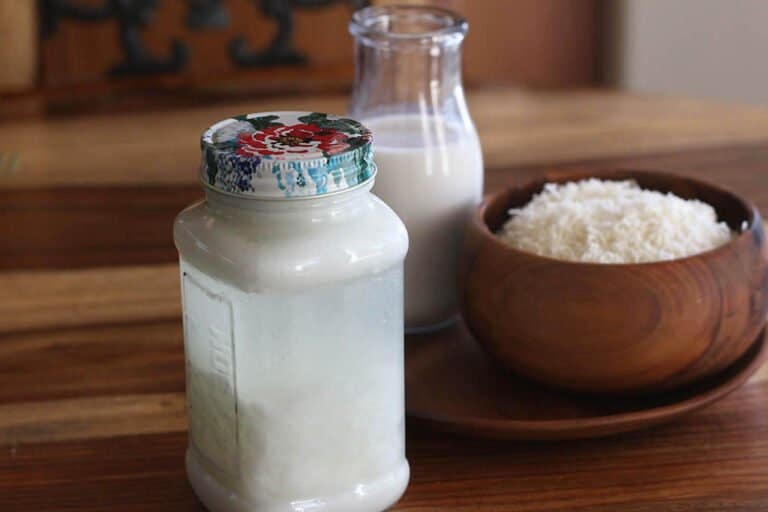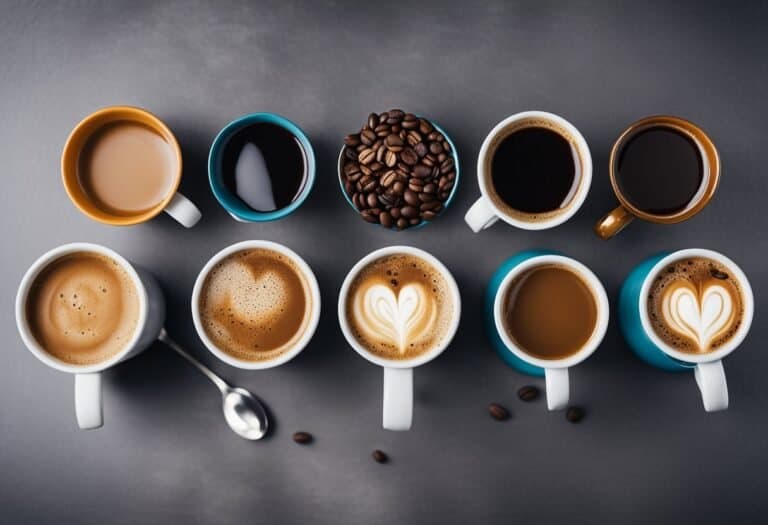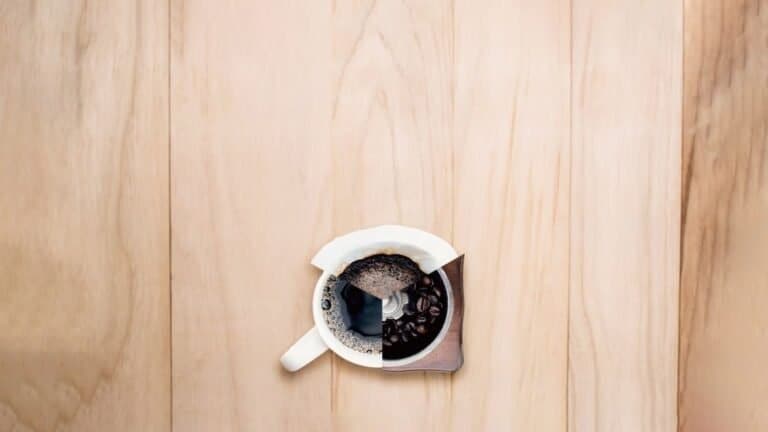How to Master Using a Tea Kettle in 10 Steps
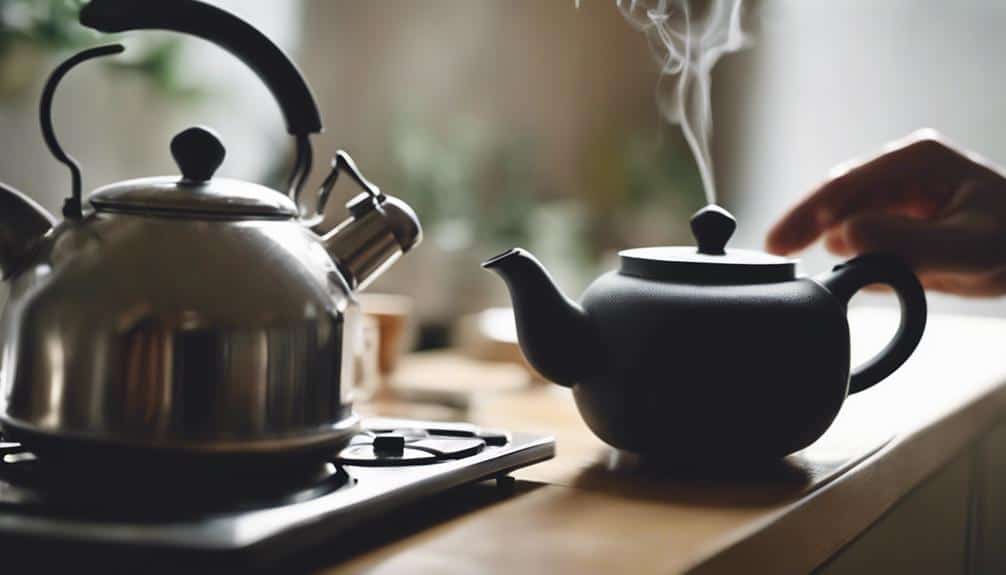
As I stood in my kitchen, staring at the tea kettle, I realized that mastering its use was more intricate than I had thought. The process seemed straightforward, yet there was an underlying complexity waiting to be unraveled. With each step, a new layer of understanding revealed itself, promising a world of tea possibilities. The journey to mastering the art of using a tea kettle in ten steps was about to begin, and I was excited to explore where it would lead.
Cleaning the Tea Kettle
To maintain the pristine condition of my tea kettle, I diligently clean it with a mild dish soap and hot water, ensuring the removal of any residues or impurities that could compromise the purity of my water. Cleaning the tea kettle isn't merely a task; it's a ritual that guarantees the sanctity of each cup brewed. With a gentle touch and a keen eye for detail, I meticulously scrub the interior and exterior, eradicating any lurking impurities that may taint the essence of my tea.
Hygiene is paramount in this process. I pay special attention to the spout and lid, areas often overlooked yet essential for the overall cleanliness of the kettle. A thorough rinse post-cleaning ensures that no remnants of soap linger, preserving the integrity of every subsequent boil. By upholding these practices, I safeguard against mineral accumulation, rust, and the insidious growth of bacteria within the vessel. In this pursuit of purity, my tea kettle remains a beacon of flawless hygiene, ready to usher in moments of solace and serenity with each brew.
Filling the Kettle With Water
When filling the kettle with water, it's essential to pay attention to the water level indicator for precise measurements. This guarantees that you add the right amount for ideal brewing results.
Adjusting the water quantity based on the tea type is vital to enhance flavor extraction.
Water Level Indicator
The water level indicator inside the kettle facilitates precise filling for peak performance and efficiency. When filling the kettle, it's important to pour in the desired amount of water, ensuring you don't exceed the maximum capacity.
Some kettles come equipped with a water level indicator marked inside, aiding in accurately measuring specific quantities. Maintaining the correct water level is essential for efficient heating and boiling, ultimately saving time and energy.
Overfilling the kettle can lead to spills and potential safety hazards when boiling, so it's important to adhere to the recommended water level. By following these guidelines and utilizing the water level indicator effectively, you can achieve consistent results when using the tea kettle for brewing or other purposes.
Temperature Control Options
Exploring the diverse temperature control options available when filling the kettle with water enhances the precision and quality of your tea brewing experience. When using electric kettles, the following features can help you achieve the perfect temperature for your tea:
- Temperature Control Settings: Electric kettles with this feature allow you to select specific water temperatures, ensuring ideal brewing for different types of tea.
- Programmable Settings: Some electric kettles offer programmable options for various tea types, guaranteeing that the water reaches the ideal temperature for each brew.
- Specific Water Temperatures: Different teas require specific water temperatures, such as 175°F for green tea and 200°F for black tea, to bring out their unique flavors effectively.
Pouring Spout Design
Considering the precision required in brewing tea, the design of the pouring spout plays a crucial role in guaranteeing controlled and spill-free water filling in the kettle. When filling the kettle with water, a well-engineered pouring spout can make the task seamless and efficient. Look for kettles with wide and drip-free spouts for easy filling.
An ergonomic pouring spout design not only provides a comfortable grip but also ensures a smooth water flow, enhancing the overall user experience. The right spout design helps prevent splashing and spills, leading to a cleaner and more convenient filling process.
Opting for a kettle with a thoughtfully designed pouring spout promotes ease of use and functionality, making water filling a hassle-free experience.
Heating the Water
Heating water in a tea kettle is an essential step in preparing a perfect cup of tea. When heating water for tea, there are a few key points to keep in mind:
- Boiling Time: Stovetop kettles typically take 5-10 minutes to heat water to a rolling boil, while electric kettles can boil water in about 2-3 minutes, making them faster than stovetop kettles.
- Water Temperature: Water reaches a temperature of 212°F (100°C) when it boils, which is ideal for brewing tea. Different types of tea require specific water temperatures, such as 160-195°F for green tea.
- Water Quality: Always use fresh, cold water to fill the kettle for the best tasting tea.
Understanding the boiling time, water temperature, and quality is vital for achieving the perfect cup of tea. Whether using a stovetop or electric kettle, these factors play a significant role in the overall tea brewing process.
Selecting the Tea
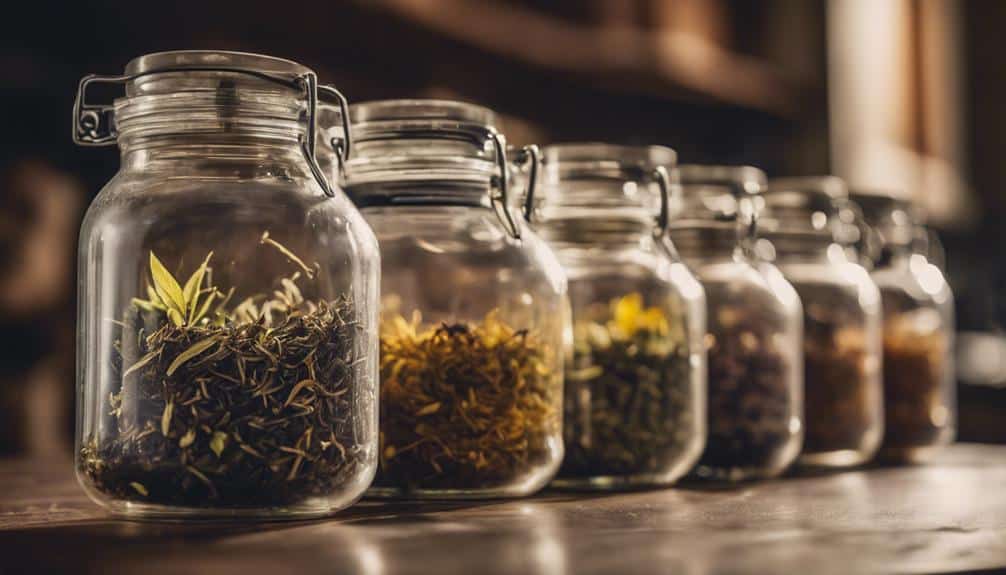
When selecting the right tea for your kettle, it's crucial to take into account the type of tea leaves you prefer, whether it's black, green, herbal, or oolong. Each tea variety demands specific brewing conditions, so choose a kettle with precise temperature controls for best flavor extraction.
Experimenting with various tea blends and adjusting your brewing technique accordingly can enhance your tea-drinking experience.
Tea Type Selection
When selecting the tea for brewing in a tea kettle, it's important to contemplate the specific type to guarantee the best flavor extraction and preparation. Different types of tea, such as black, green, and herbal teas, require varying water temperatures for best brewing.
- Black tea can withstand higher water temperatures, typically around 200-212°F.
- Green tea is more delicate and should be brewed at temperatures ranging from 150-180°F.
- Herbal teas often benefit from boiling water temperatures, which help extract their flavors effectively.
Researching the recommended water temperature and steeping time for the particular type of tea you choose will ensure a delightful tea-drinking experience. Experimenting with different tea varieties will help you discover your preferred flavors and brewing techniques.
Flavor Preferences
To fully appreciate the nuances of tea brewing, honing in on your flavor preferences is key when selecting the ideal tea for your kettle. Different types of tea require specific water temperatures to bring out their best flavors. Experimenting with these temperatures can help customize the taste to suit your preferences. Here is a table outlining the specific water temperatures for various types of tea:
| Tea Type | Water Temperature |
|---|---|
| Green Tea | 175°F |
| Black Tea | 212°F |
| Herbal Tea | Boiling (212°F) |
| White Tea | 160-185°F |
| Oolong Tea | 190-200°F |
Brewing Recommendations
For ideal tea brewing, selecting the right type of tea based on your flavor preferences is crucial. When it comes to brewing recommendations, each type of tea requires specific steeping instructions and water temperatures to achieve the best flavor extraction.
Here are some key points to take into account:
- Black Tea: Utilize fully boiled water at 212°F for the most effective extraction of flavors.
- White Tea: Maintain water temperatures between 160-180°F to preserve delicate flavors and avoid bitterness.
- Oolong Tea: Aim for water temperatures around 190-200°F to strike a balance between green and black tea characteristics.
Infusing the Tea
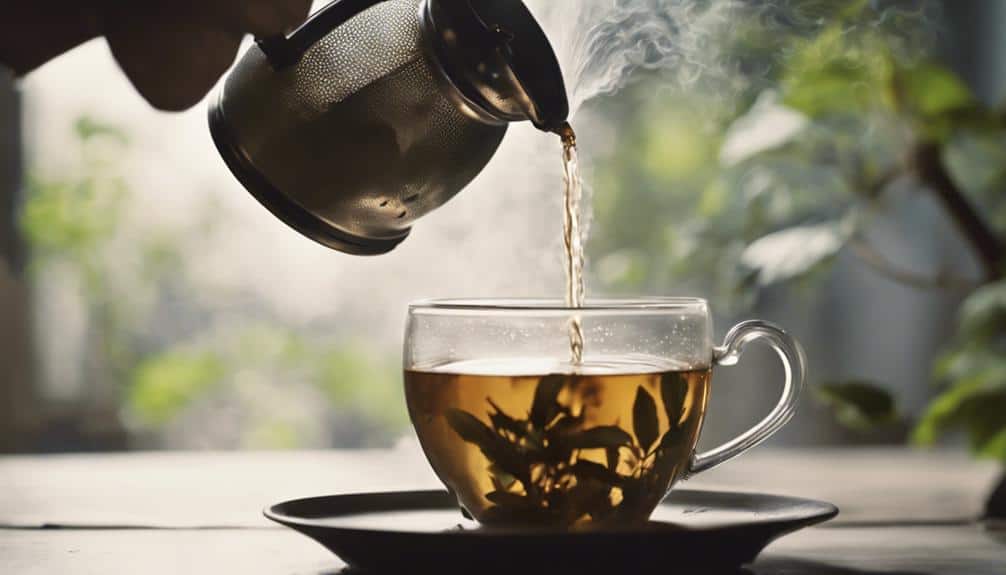
During the art of tea infusion, the vital step is steeping tea leaves in hot water to reveal their full flavor potential. Boiling water is commonly used to infuse tea, and the type of tea kettle plays an essential role in this process.
Stovetop kettles are popular for their ability to quickly heat water to the desired temperature for steeping the tea. When infusing tea, it's important to take into account the ideal water temperatures for different types of tea. For instance, green tea often requires lower water temperatures compared to black tea to prevent bitterness and bring out the delicate flavors.
Loose leaf tea is best suited for infusing as it allows the leaves to unfurl and release their full aroma during steeping. Understanding the specific steeping times and water temperatures for various teas can help achieve the perfect infusion, resulting in a delightful and flavorful tea experience.
Pouring the Tea
When pouring tea from a kettle, it's essential to handle the kettle with a steady grip as you tilt it to pour the hot water.
A controlled and even stream should be aimed for to prevent any spills or splashes.
Remember to maintain a safe distance to avoid any burns from the steam or hot water.
Proper Tea Pouring
With finesse and control, the art of pouring tea from a kettle requires a steady hand and a keen eye for precision. When it comes to the proper pour, remember these key points:
- Tilt the tea kettle slightly to control the pour and avoid spillage.
- Pour the hot water slowly and steadily to prevent splashing.
- Aim the spout close to the teapot or cup for a precise pour.
Using a kettle with a narrow spout can greatly enhance your control over the flow. Practice is essential for honing your technique and ensuring accuracy in pouring the perfect cup of tea.
Tea Serving Etiquette
To perfect the art of tea serving, one must master the graceful art of pouring tea with precision and finesse. When pouring tea, delicately hold the teapot handle in one hand while supporting the lid with your thumb to avoid spills. Tilt the teapot spout slightly downward to prevent dripping, pouring the tea slowly into the cup.
Following traditional tea serving etiquette, serve tea from the host's right side to the guest's right side. Show respect and hospitality by offering to pour tea for guests before attending to your own cup. Remember not to overfill the cup, allowing space for guests to customize their tea.
Embrace the elegance of tea serving rituals by executing each pour with grace and attentiveness.
Maintaining the Kettle
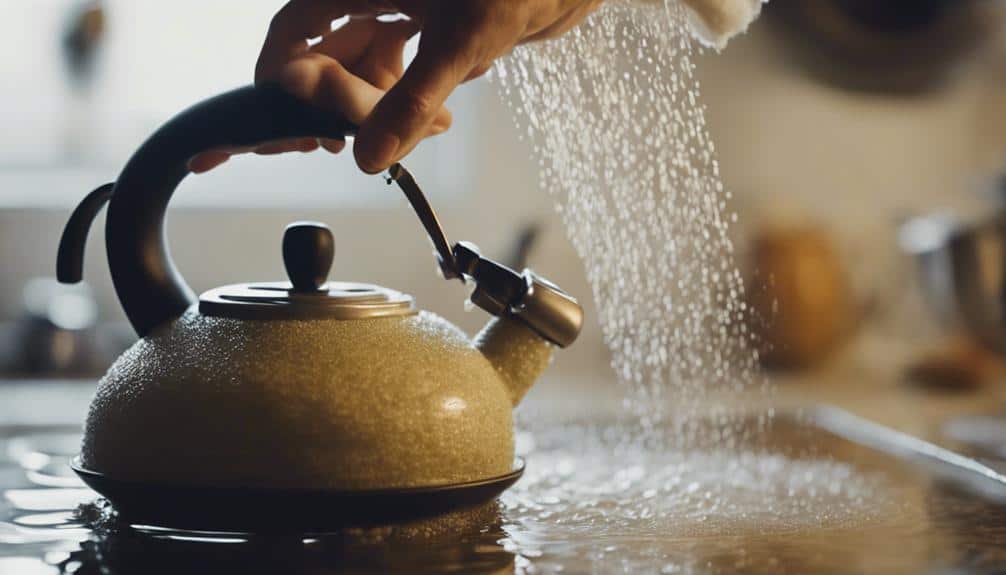
In maintaining the kettle's peak performance, it's essential to regularly descale it with vinegar to prevent mineral buildup. Keeping the kettle clean not only guarantees a better tasting brew but also prolongs its lifespan. Here are key steps to maintain your tea kettle effectively:
- Descaling: Regularly descale the kettle with vinegar to prevent mineral buildup and maintain peak performance.
- Exterior Cleaning: Use a damp cloth to clean the exterior of the kettle and make sure it's free from dirt and residue.
- Proper Storage: Store the kettle dry and open according to the manufacturer's instructions to prevent mold or mildew growth.
It's important to avoid harsh chemicals when cleaning the kettle as they can damage the materials and reduce the kettle's longevity. By following a consistent maintenance routine, you can keep your kettle in top condition and enjoy many cups of perfectly brewed tea.
Understanding Steeping Times
Understanding the right steeping times for different types of tea is essential for achieving the best flavor profiles in your brew. When I prepare my tea, I always start by bringing the water to a boil, ensuring it's at the right temperature for the specific type of tea I'm making.
For green tea, a quick steep of 2-3 minutes is ideal to avoid bitterness and capture its fresh taste. On the other hand, black tea demands a longer steeping time of 4-5 minutes to reveal its robust flavors fully. Herbal teas, known for their diverse ingredients, usually require a steeping time of 5-7 minutes for a rich infusion. Delicate white tea, with its subtle nuances, needs only 1-3 minutes to brew perfectly.
Experimenting With Tea Varieties
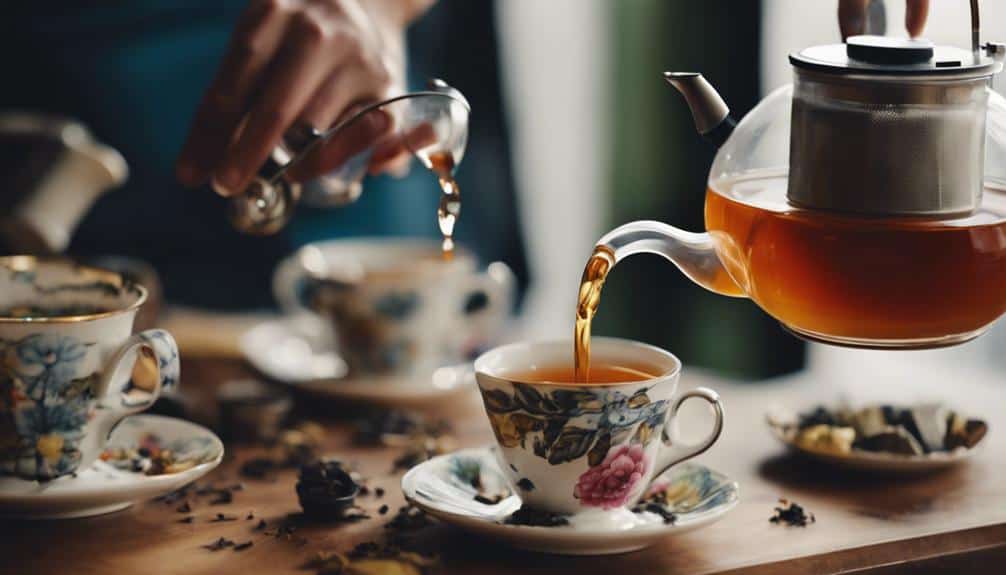
When exploring the world of tea varieties, one can enhance their brewing experience by experimenting with different flavors and blends to uncover unique and personalized combinations. To enhance your tea journey, consider the following:
- Adjust Water Temperatures: Different types of teas require specific water temperatures for best brewing results. For example, green tea is best brewed at 160-195°F, while black tea thrives at 212°F.
- Explore Loose Leaf Teas: Embrace the full flavor potential by using loose leaf teas in your tea kettle. This allows for a richer infusion and a more aromatic experience.
- Try Unique Tea Blends: Discover the world of unique tea blends to find exciting flavor profiles and create a personalized tea ritual. Blending different teas can lead to delightful taste combinations that cater to your preferences.
Experimenting with herbal teas, using a tea infuser to contain loose leaves, and exploring diverse tea blends can truly transform your tea brewing experience into a delightful and customized adventure.
Enjoying Your Perfect Cup
Exploring the diverse flavors of tea varieties can lead to the creation of a perfect cup tailored to your individual preferences. To guarantee you enjoy your perfect cup, it is crucial to use the right kettle with the correct water temperature and steeping times according to the tea type. By adjusting the water temperature based on whether you're brewing black, green, or herbal tea, you can extract the best flavors and aromas from the leaves. Refer to the table below for a quick guide on water temperatures and steeping times for different types of tea:
| Tea Type | Water Temperature | Steeping Time |
|---|---|---|
| Black | 200°F | 3-5 minutes |
| Green | 175°F | 2-3 minutes |
| Herbal | 212°F | 5-7 minutes |
| White | 185°F | 4-5 minutes |
| Oolong | 195°F | 4-7 minutes |
Conclusion
Mastering the art of using a tea kettle involves attention to detail, precision, and practice. By following the steps outlined in this guide, from cleaning to selecting the perfect tea and mastering steeping times, you can enjoy a perfect cup of tea every time.
With consistent maintenance and experimentation with different teas, you'll become a tea kettle expert in no time. Cheers to delicious tea moments ahead!


